Why I Bought It: Spaceone Watches Jumping Hour by Joshua Munchow – it Doesn’t Cost the Earth!
A space journey takes massive cooperation between hundreds or possibly thousands of individuals before anything even gets off the ground, that’s just a fact. No matter how driven any individual is, putting a craft into space (at least anything more complex than a weather balloon) takes the combined effort of materials suppliers, manufacturers, designers, engineers, craftsmen, physicists, mathematicians, technicians, tradesmen, government officials, and at least a thousand other jobs that most may never even think about.
It is hard to leave this planet, especially to leave this planet safely.

This doesn’t even take into consideration that some space journeys require a human crew, meaning that the training (and everything that goes into that) and support of those destined for the stars dwarfs the number of individuals that will end up taking the big ride into the sky.
Teams of doctors are constantly monitoring the astronauts/cosmonauts before, during, and after the mission, on top of the monitoring and communication from mission control, i.e. everyone that is on-call to workshop solutions should anything go wrong during the flight.
I mention this incredible correlation of manpower to emphasize the point that to accomplish great things it often takes immeasurable input from uncountable numbers of people. No one person has the knowledge and skill to put a rocket or probe into space, the goal relies on huge swaths of talented and skilled people all dedicated to a single goal – excellence at what they do.
You don’t need to be dedicated to the goal of putting a craft or people into space, you simply need to be dedicated to your chosen profession in such that you can be trusted to do your job right and do your job well.
Creating a brand-new watch is often a similar endeavor, even if failure doesn’t lead to fiery tragedy on the nightly news. With very few exceptions (and even then, I could easily argue there are no exceptions), a new watch takes many people working together to bring it to launch.
See what I did there?
In all seriousness though, to launch a watch that is anything more than a completely handmade unique piece, one must creating a with system of experts toward the goal of producing a finely finished timepiece.
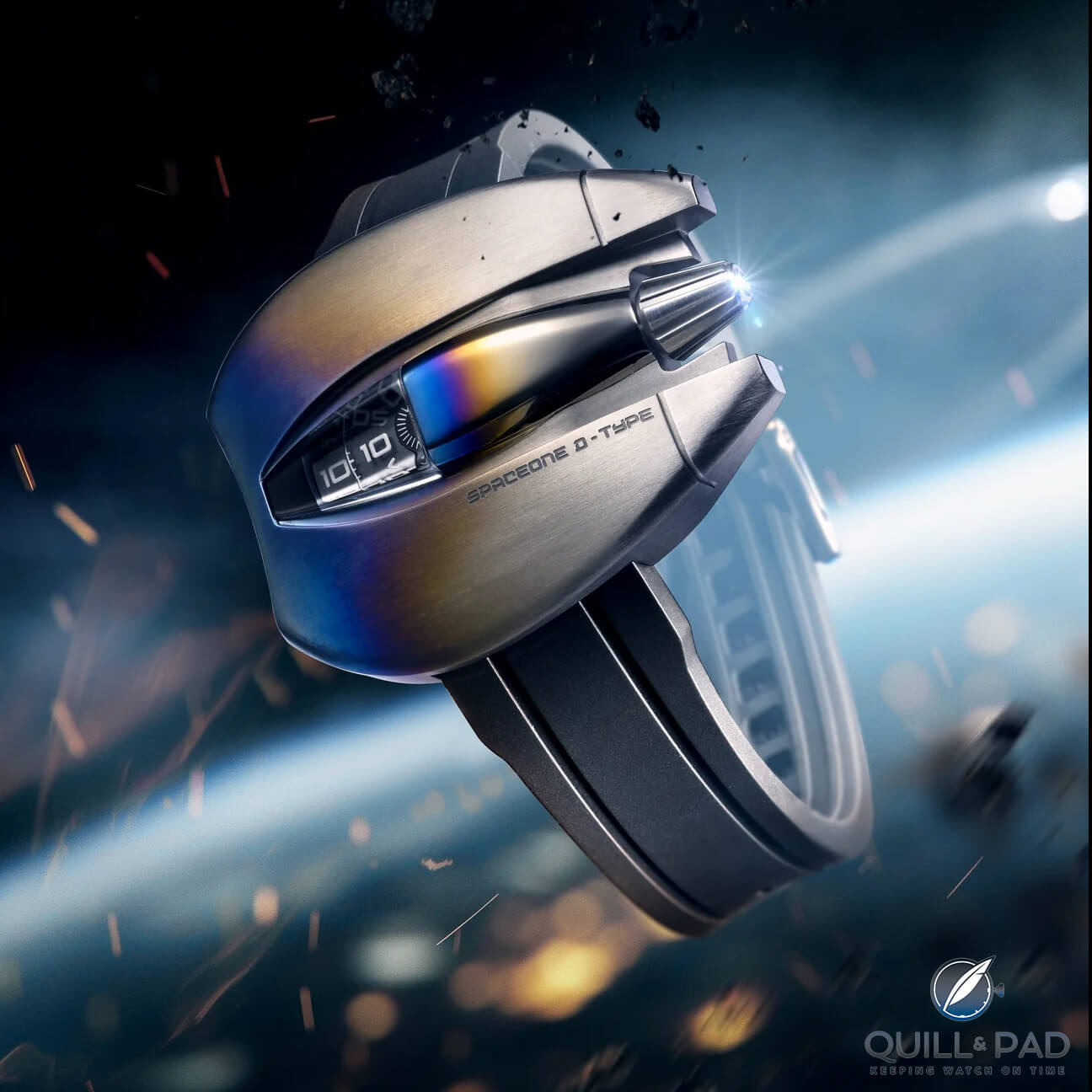
SpaceOne Jumping Hour in brushed steel
Nothing better prepares you to understand Spaceone Watches than to understand that fact. It is also a reason I was so excited to make a rare (for me) watch acquisition when Theo Auffret and Guillaume Laidet released the revelation that was to be a star of my meager collection, the Spaceone Jumping Hour.
————————————————————————————————————–
—————————————————————————————————–
Spaceone Watches Jumping Hour
A watch that is a collaboration between two people is already a misnomer, as it is a collaboration between multitudes. The Spaceone Jumping Hour is a watch that began as an idea between friends which morphed into a plucky little Kickstarter project and ended up with a new brand that has already released two watches that have redefined what a small brand can create for truly reasonable amounts of money.
It all started for me when I was scrolling around on Instagram, taking in the algorithmically generated watch content when I stumbled upon an image that looked incredibly intriguing.
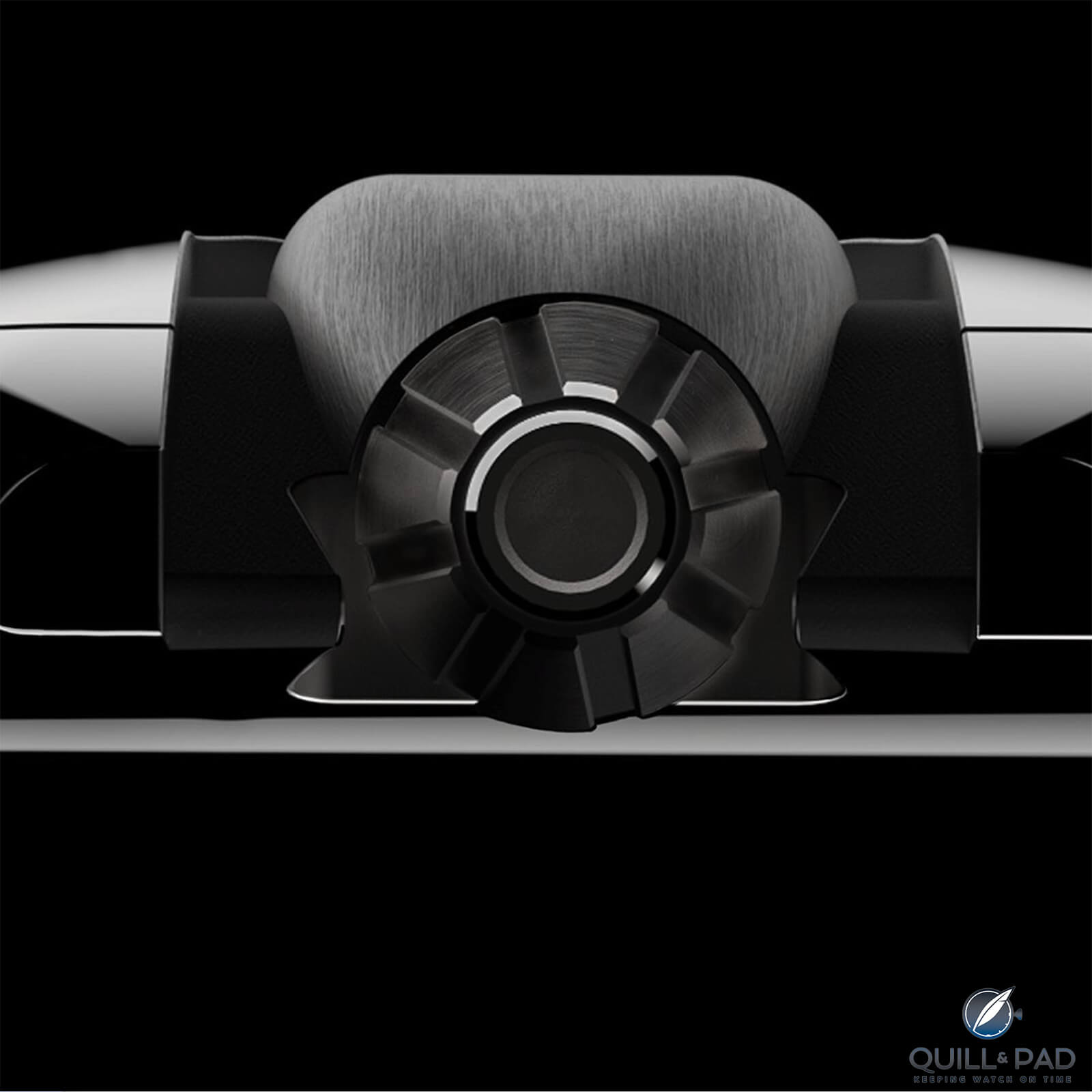
One of the first teaser images of what would become SpaceOne
It was an extreme close-up of the crown of a watch with sculpted forms flanking it, all lit heavily from above with reflections coming from underneath, set against a black background. I was instantly transfixed, and after a moment I scrolled on to read the caption and I saw a familiar name, Theo Auffret.
The post came from a now defunct Instagram page for Argon Watches (more on that later), and it name dropped independent watchmaker Theo Auffret and Guillame Laidet, a man that was quickly becoming a wizard in revitalizing stale brands such as Vulcain and Nivada Grenchen.
In the text of the IG post, it simply talked about a new project coming soon and I followed this new page and keep an eye on any new posts. It wasn’t long until other case profile images and discussions of price point were shared, were in the comments.
This is where I became even more intrigued, the watches would be starting at 1,500 Euros in steel. This flipped a switch in my head because at this very same time, not more than a month before I had committed to buying a new watch and I was looking around for the perfect fit.
Now I was staring at something that aesthetically hooked my attention with sparse details that made it seem almost too good to be true, Swiss movement, sapphire cockpit (what could that mean?), assembled in France, and the cherry on top, a jumping hour.
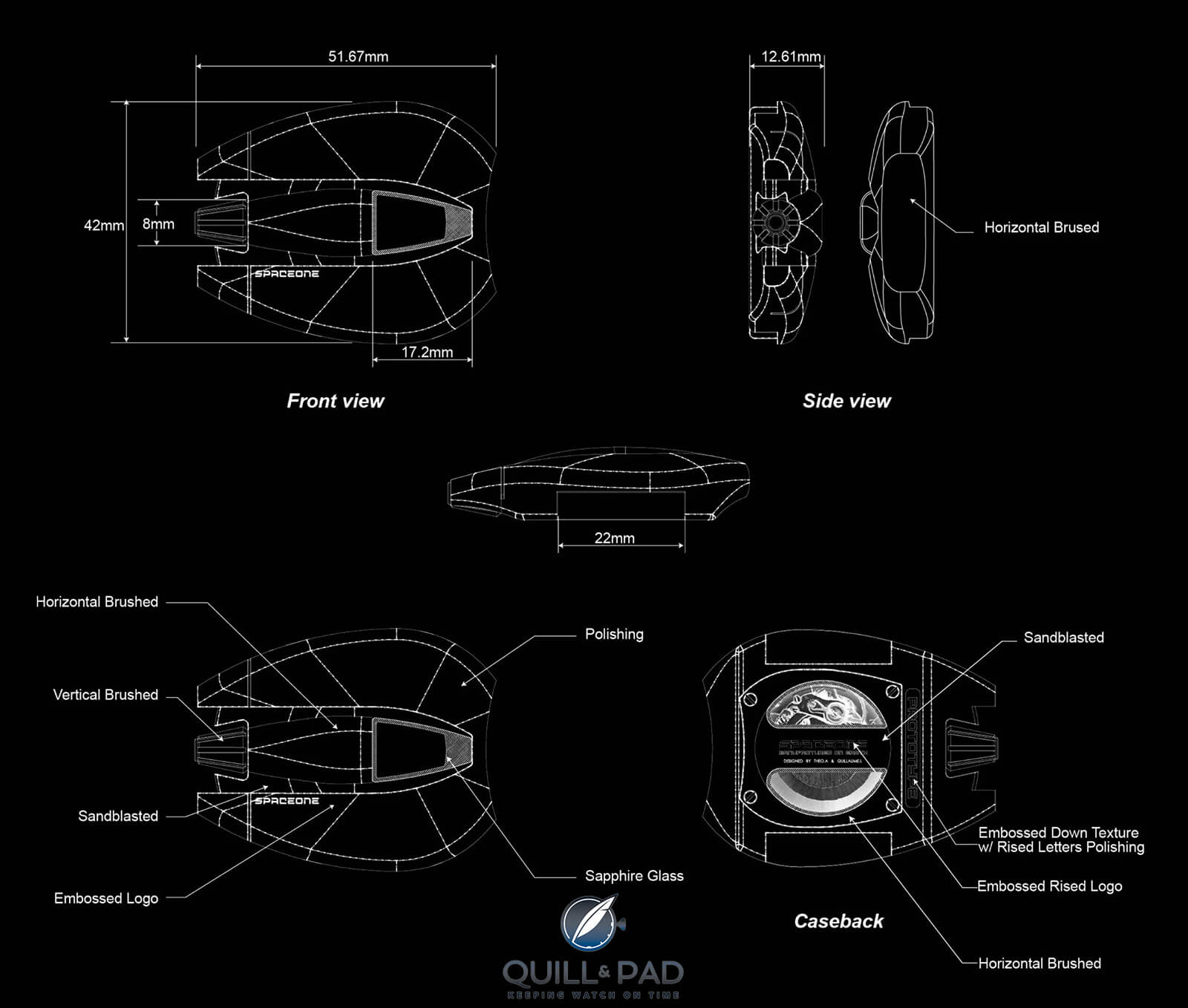
SpaceOne Jumping Hour design
When you combine all that with Theo Auffret, the rising, young independent watchmaker on the scene, Guillame Laidet, a man skilled in marketing and understanding what collectors want, and a price point that wouldn’t make me flinch – it pretty much sealed the deal. But I still had to wait three months to even see if the watch would be something I’d want once it was revealed.
—————————————————————————————————–
—————————————————————————————————–
The collection of a non-collector
Unlike GaryG, Martin Green, or pretty much any other serious collector that will talk about acquiring watches or making the decision between pieces, I have never been a collector in any real sense of the word. At my peak, I had amassed a collection of around 14 serious watches (and a small handful of lesser pieces), one of which I had built by hand (see Making My First Watch: Adventures of a Beginner), three I had bought with my own money, five I had very luckily won through various contests on the internet (I still can’t believe that luck), and the rest were gifts of great generosity.
But then, due to some hard times and a load of debt that I was growing very tired of, the great sell-off began. By the end, I was left with only five; two gifted watches, two everyday Seiko’s, and the watch I had made with my own two hands.
Including the watches I sold, I had never paid more than $600 for a watch, and now the cost of my collection was a bit less than $300, plus materials for the watch I built. I admit I was very lucky (and am truly grateful) to have the two nicer watches I was gifted, but still, the grand value of the collection was now less than one month’s salary after taxes in a position where I was lagging well behind the market.
I have never been able to mentally justify paying real money for watches when I know that I still have debts to pay and other desires to pursue. In fact, I always convinced myself that if I should spend real money, it should be on tools and materials so that I can make things instead of just consuming (which is why the tools to build my watch cost five times the total for the materials).
But after four years of paying down credit card debt, I made my last payment in December of 2022, six months ahead of my already aggressive payoff schedule that had over sixty percent of my paycheck going towards my debt.
This achievement was due, in large part, to two major changes in my life after the pandemic: meeting my partner and getting a new job. Sharing living expenses, getting emotional support (and financial tutoring) from my significant other, and getting a pay bump freed up some funds to really attack my debt.
The feeling of paying it off was akin to taking off a backpack full of giant textbooks that I had been carrying for a decade. My partner knew what the achievement meant to me and that I had said I wanted to celebrate by buying myself a nice watch, something I wouldn’t have to sell unless I wanted to, so she urged me to follow through.
Getting “permission” to treat myself was a brand-new feeling, especially after growing up without money. Knowing that I could now save up and get something really nice if I just continued my payment strategy, and that this decision wouldn’t financially harm me was also incredibly liberating.
But being a pragmatic and frugal person from a lifetime of budgeting and choosing the cheapest option is a hard nut to crack. In the end I compromised with myself and decided that the watch could only cost as much as I had budgeted for debt payments in the final months of my payoff, leaving me with around $3k to work with.
—————————————————————————————————–
—————————————————————————————————–
Choices, choices, choices
Any collector worth their salt already knows that with around three thousand to spend and a broad enjoyment of all types of watches, means there are thousands of options if you are only choosing one watch.
And before you ask, yes, I did indeed look at every “Best watch collection under $1k / $3k / $5k” article that had been published in the previous five years (which was basically like asking my watch journalist friends for their opinions because some were literally written by them).
This helped to get a sense of what the broader community had to say about where the true value could be found. I had a growing list of watches that were well within my budget and many more that were stretching my budget sometimes up to 2x my limit.
What can I say, I like to consider the options. I was comparing vintage watches, micro brands, entry level luxury, independent, and the aspirational holy trinity. Since those would require major concessions on condition, style, pushing my budget, and risking making a bad purchase, I put those off for now.
But I had the holiday season to ponder, and the cold days of January to narrow it down, understanding that soon we would be seeing new releases and my list would grow again as fair season approached.
And then it happened. In the first week of January the first teaser images of the (then) Argon/Spaceone appeared.
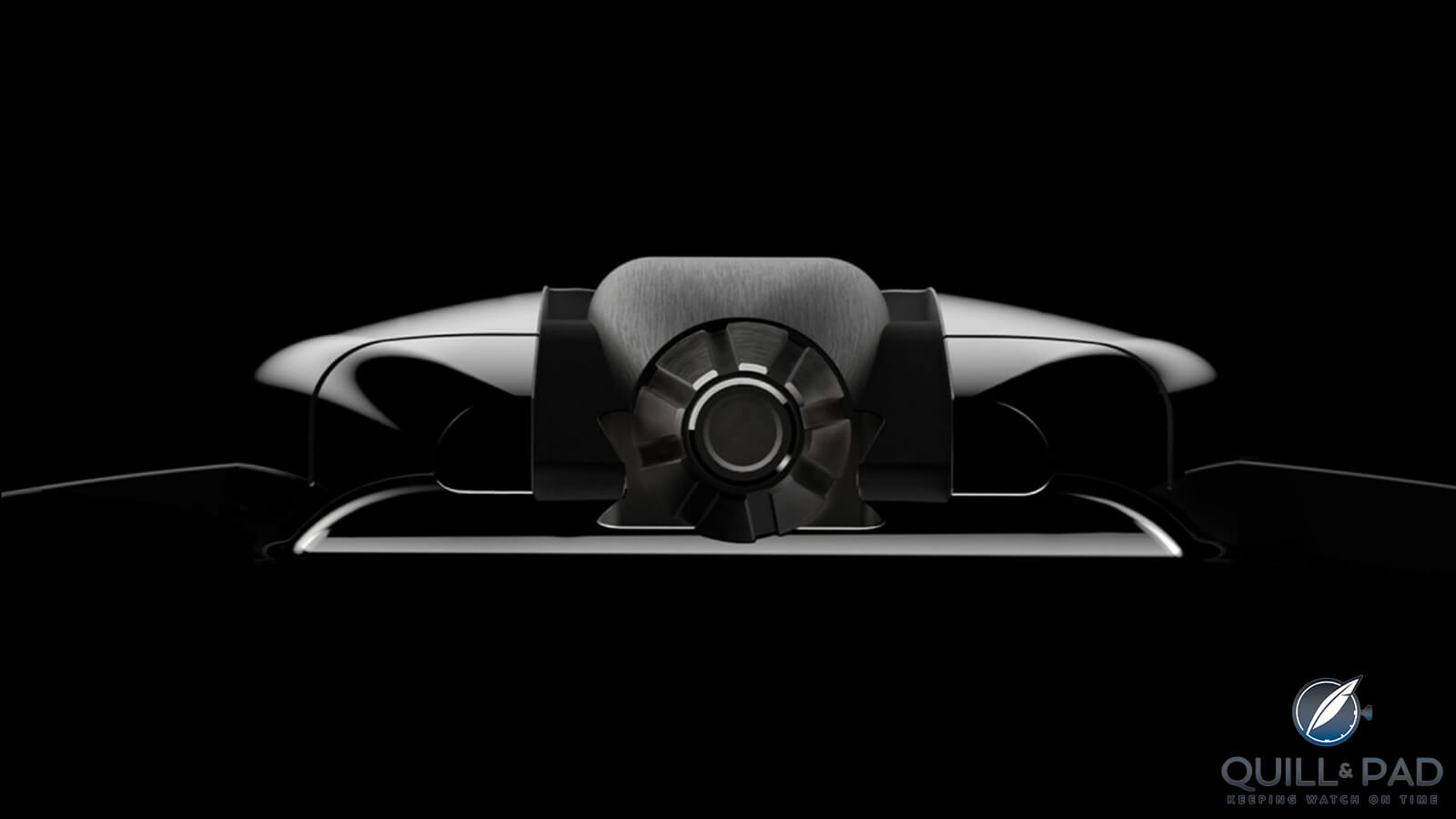
One of the first teaser images of the Argon/SpaceOne
All of my broad desires coalesced around a single watch that was well within my budget and was coming from highly respected names in the industry, it seemed perfect.
But I still didn’t know what the darn thing really looked like.
Saying the weeks leading up to the public reveal of the Spaceone were nerve wracking is a major understatement. Even though I had not committed to anything, I was tremendously aware that I had committed emotionally and if the watch didn’t meet my ever-growing expectations, I would be heartbroken.
I began to worry that I wouldn’t like it, or there would be some design issue that would bother me enough that I wouldn’t be able to get over, or that the price upon release would inevitably go up one all the final costs were tallied.
—————————————————————————————————–
—————————————————————————————————–
Reveal, let down, re-energization, & commitment
Knowing that I was headed to Geneva for Watches & Wonders, and seeing that Auffret and Laidet were planning to have a table in one of the hotels, I reached out to make sure I could swing by and see the still unknown watch in person. I was excited, even if I was a bit nervous that I’d be underwhelmed.
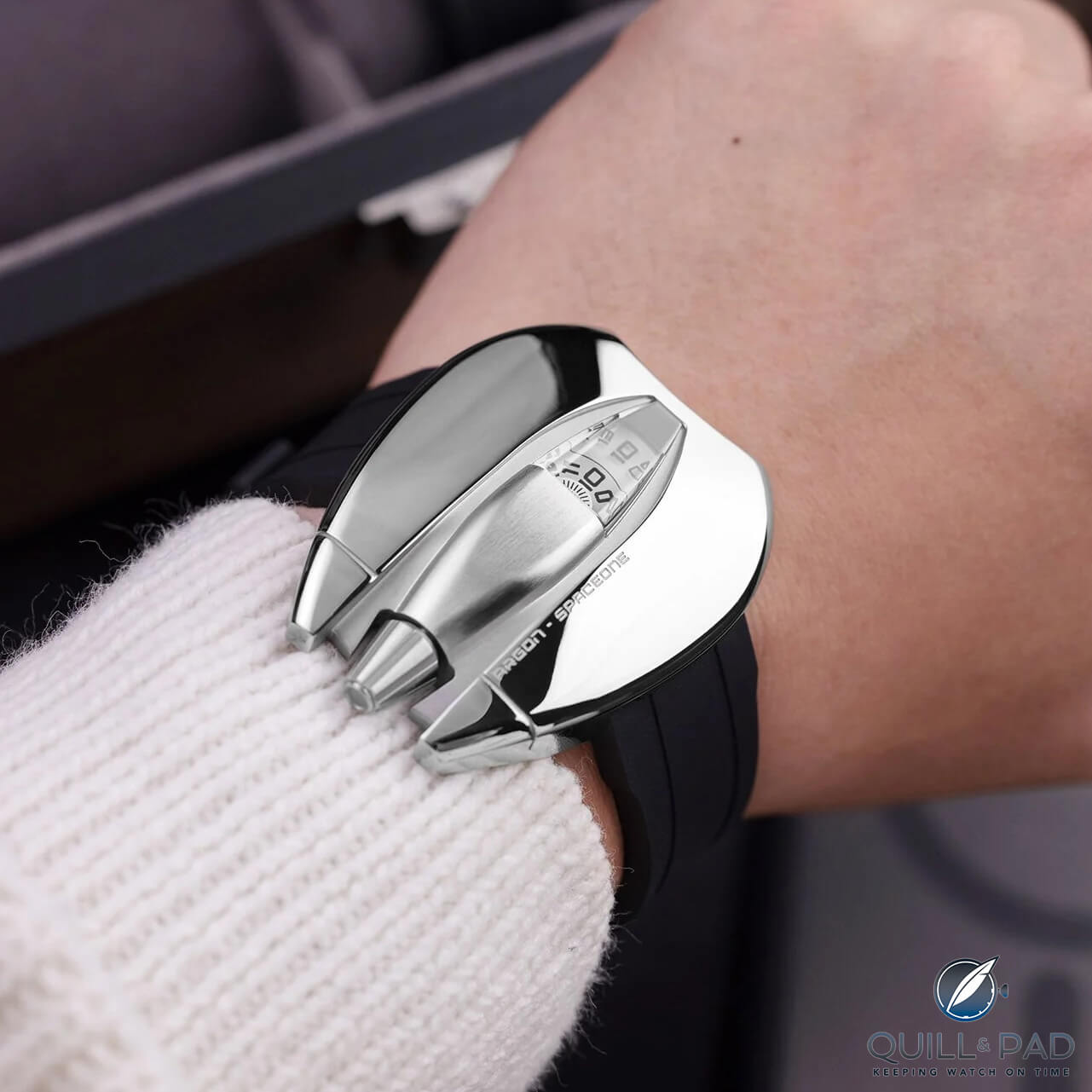
SpaceOne Jumping Hour in polished steel on the wrist
The day I arrived in Geneva was also the first day that I saw the first photos of the Spaceone on Instagram (though not the official launch photos), and it wouldn’t be hyperbole to say my worst fears were partially realized. The photos I saw did not inspire the same excitement and immediate love that the teaser images had, and I was somewhat shattered.
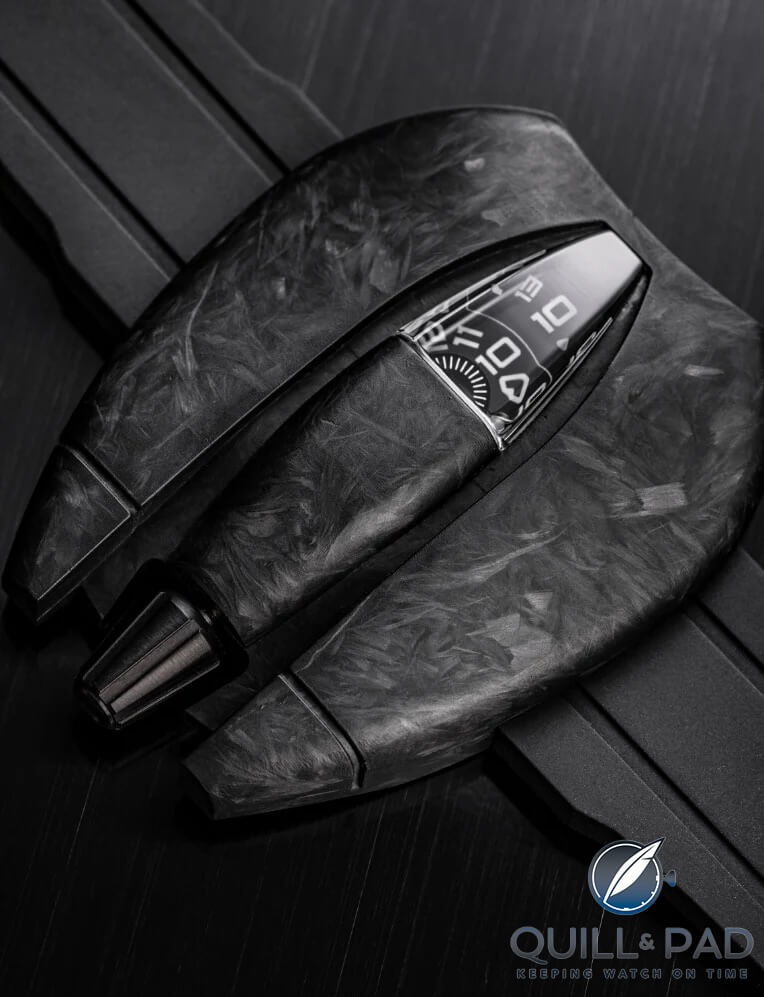
SpaceOne Jumping Hour in forged carbon
I knew that it was common for watches to look very different in person than in photos, especially wristshots, and that my imagination had been running wild for three months, so I steeled myself in the hopes that getting it on my wrist would change my mind.
Two days later I finally made it to the lake and visited the hotel where Auffret and Laidet had set up to have meetings, and got my first good, honest look at the Spaceone.
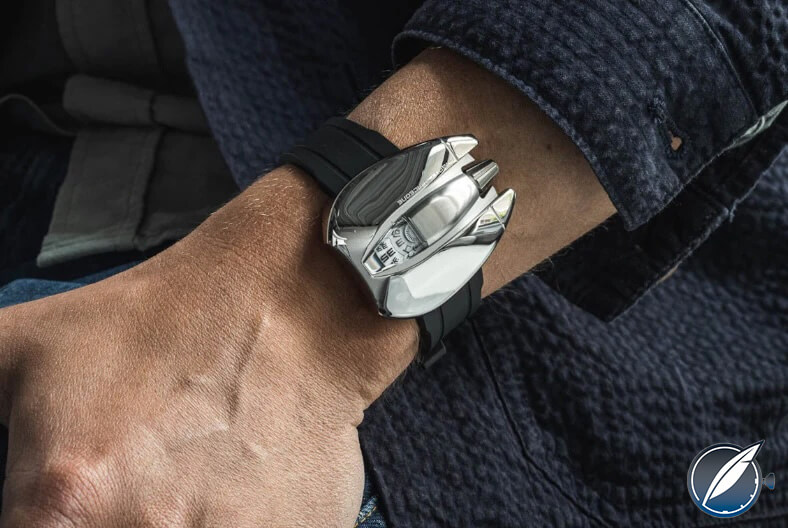
SpaceOne Jumping Hour in polished steel
It took 30 seconds of picking up three variations in steel and forged carbon and trying one on for me to know that I was going to buy this watch, it was that quick.
—————————————————————————————————–
—————————————————————————————————–
The good and the bad
The case is a bit of a spiritual successor to the De Bethune Dream Watch 5 mixed with a healthy dose of Urwerk vibes, especially in the blue titanium case that I ended up choosing.
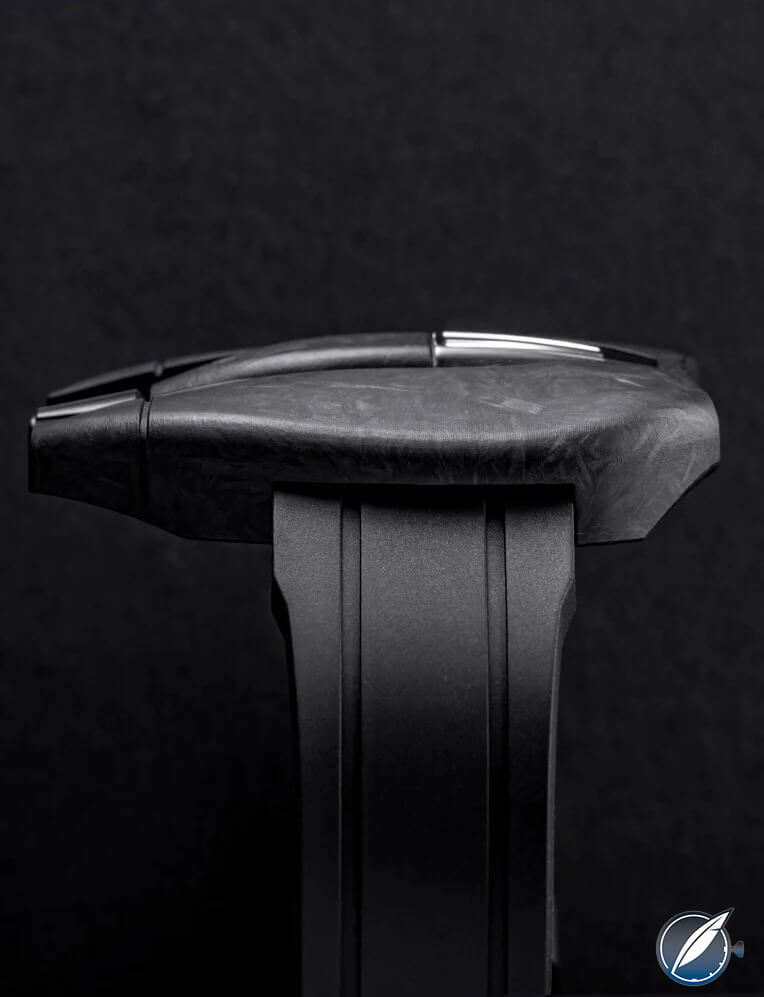
SpaceOne Jumping Hour in forged carbon in profile
The outer “hull” of this spaceship inspired watch comes either brushed or polished with the central fuselage polished to a mirror finish. The sapphire window into the time display flows perfectly with the machined case and keeps the watch more expressive than practical, exactly what I love in an avant-garde watch.
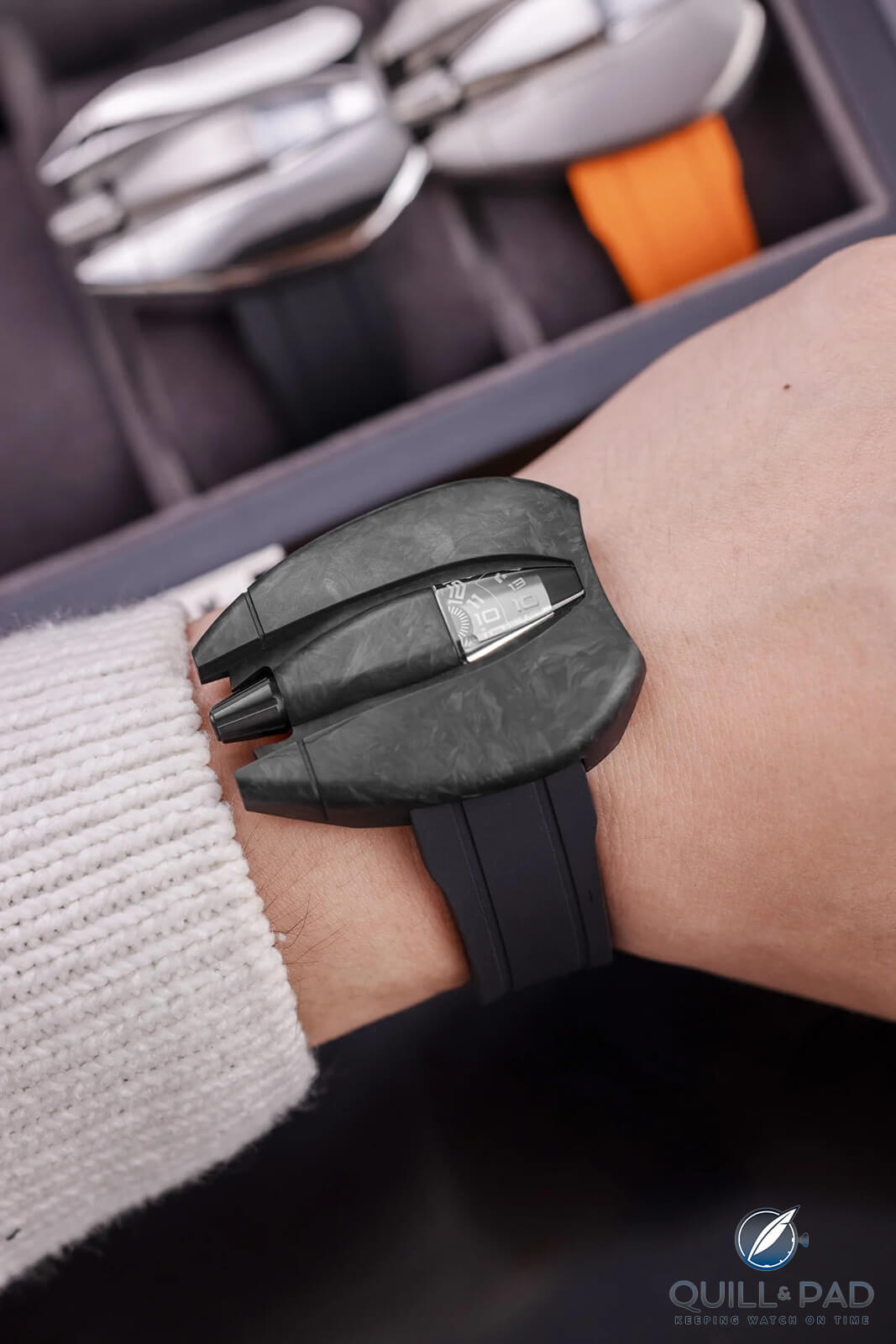
SpaceOne Jumping Hour in forged carbon
The forged carbon case was the least expressive to me and given the option for bright blue titanium there was no other choice in my mind.
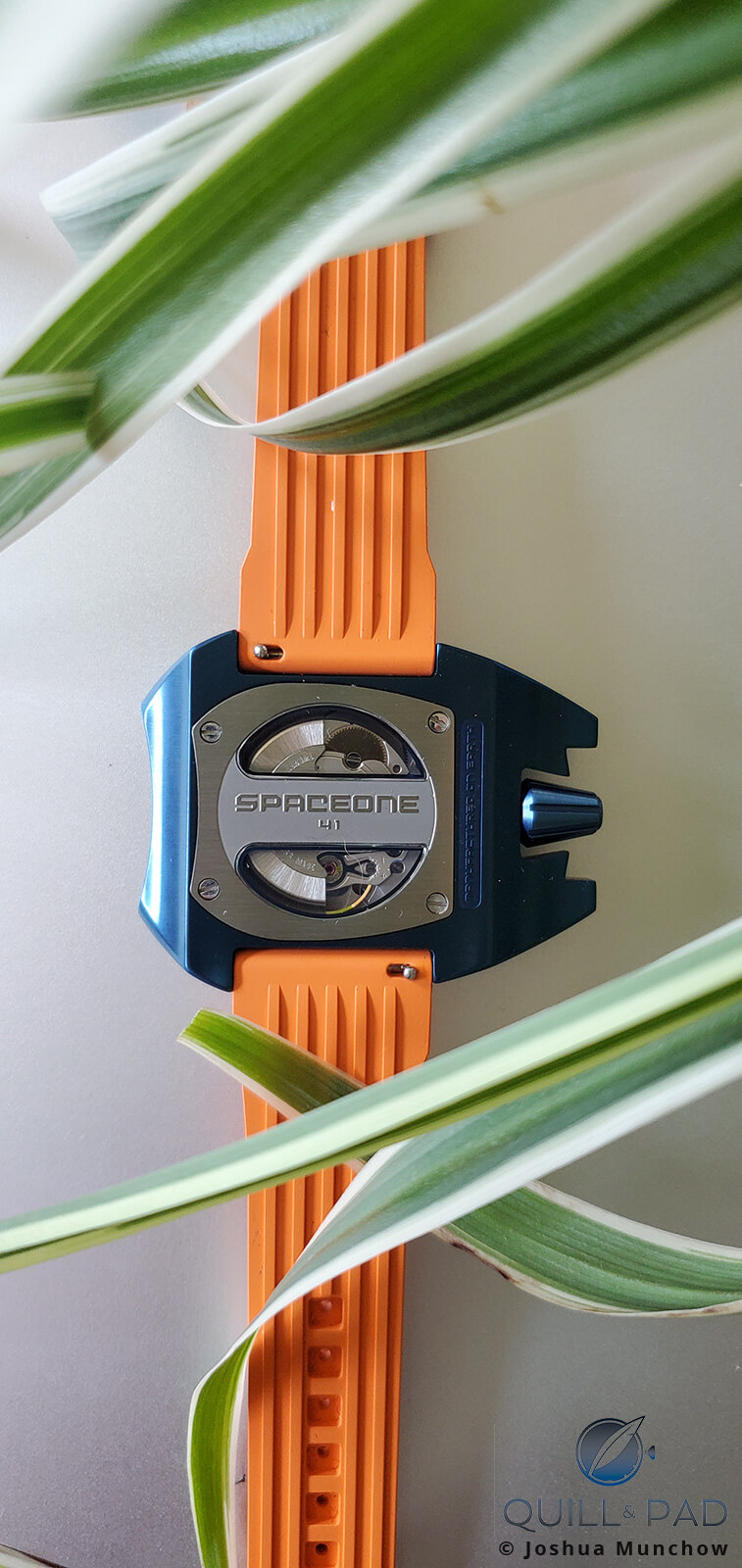
Back of the SpaceOne Jumping Hour in blued titanium
Inside, the jumping hour mechanism was developed by Theo Auffret as a module to attach to the Soprod P024 movement, keeping it simple but adding that high-end independent watchmaker touch that Auffret offers such an affordable project.
The size and shape of the case fits surprisingly well on the wrist with a perfectly shaped “blunt” nose that dives inward to prevent anything from digging into your wrist.
It was a definite surprise at just how small the watch feels given its length due to the design, but highlights that the proportions are very well considered for an atypical watch.
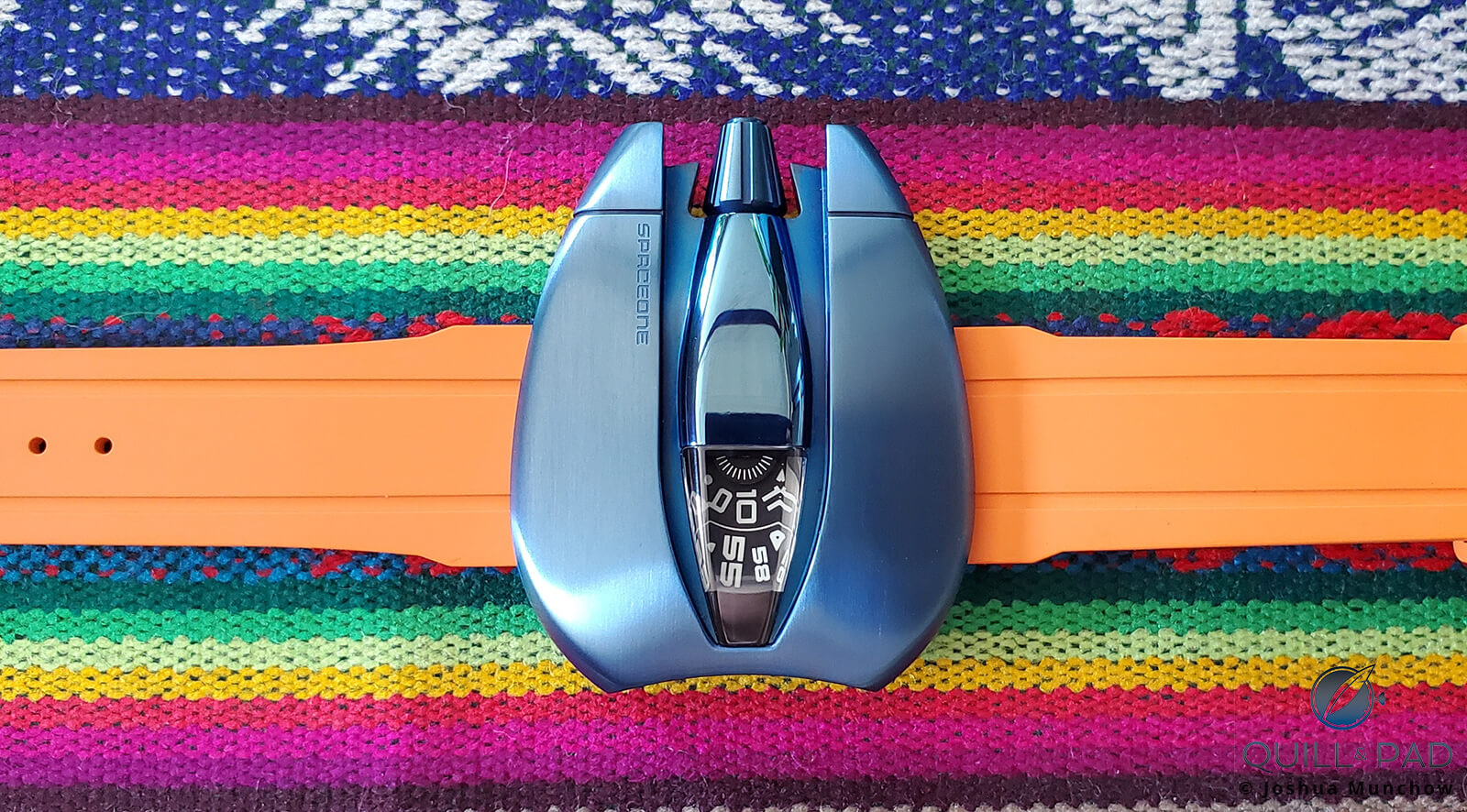
SpaceOne Jumping Hour in blued titanium
The crown extends from the case like an ion engine on an advanced spacecraft, perfectly embodying the Spaceone name of the watch. The machining on the case is very simple but very well balanced, something that is hard to come across in quick photos on the wrist, but in person it really sings.
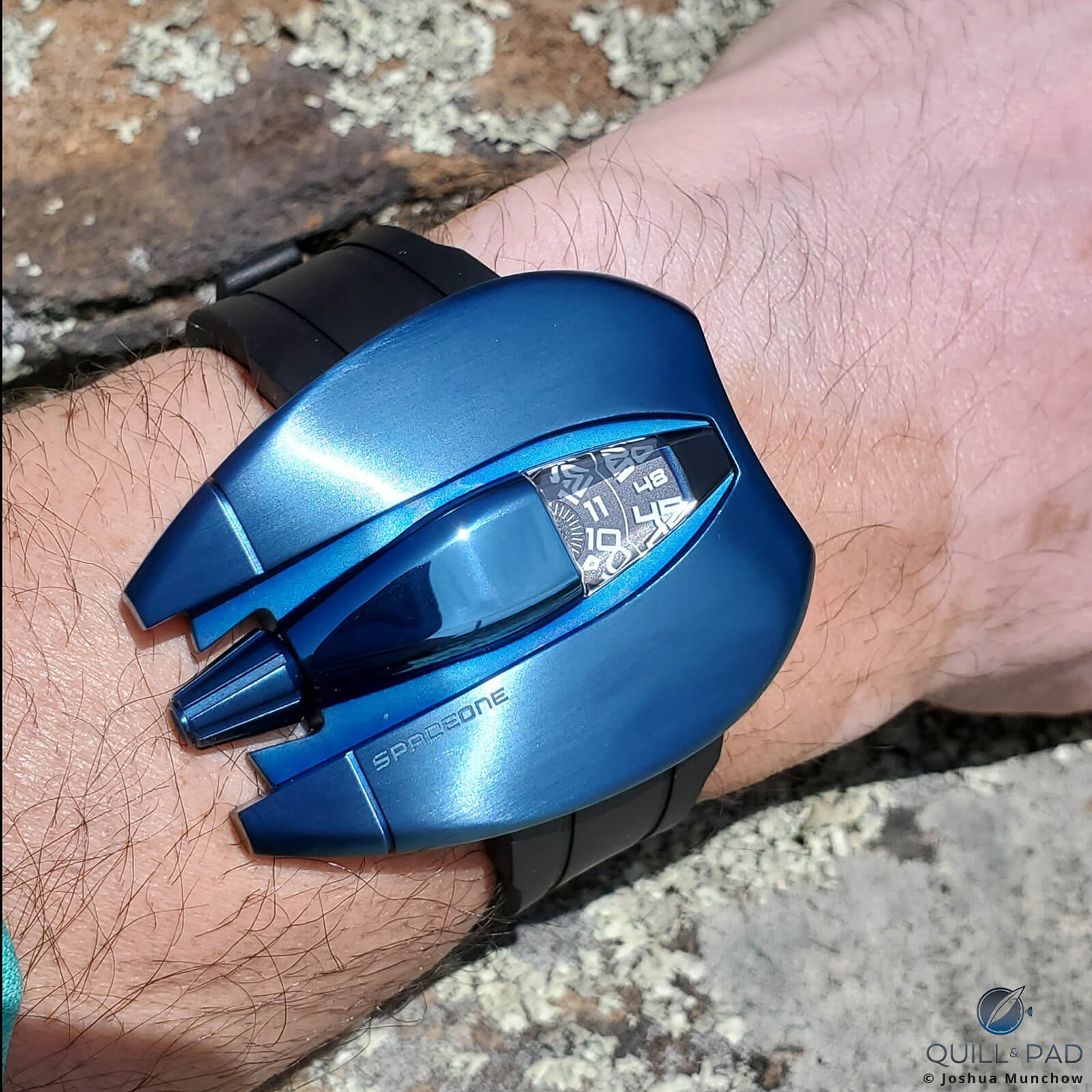
SpaceOne Jumping Hour in blued titanium on the wrist
The continuous running minutes are easy enough to read, the hours are clear, and though I am a little disappointed that the jumping mechanism isn’t instantaneous, I definitely am not complaining at this price point or fit and finish. After spending less than ten minutes with the watch in Geneva it was obvious that this was a very well-made watch at a great price.
The fact that independent watchmaking star Theo Auffret had joined forces with brand whisperer Guillame Laidet led to the pair’s strengths coming out in different ways and making for a true affordable piece of avant garde watchmaking.
Speaking with Guillame and Theo about the piece and their inspiration, and how they planned to develop this still as-of-yet-unlaunched brand helped confirm my feelings from the first 30 seconds of handling this watch. It was going to be a good product at a good price that was more interesting and well made than many others in the same range.
Laidet’s experience with mass manufacturing and brand building meant that he not only understood how to manage developing a brand strategy, but he also knew how to maximize value for the collector.
—————————————————————————————————–
—————————————————————————————————–
Following the progress
If meeting the pair in Geneva, trying on the watches, and hearing about how the brand was hoping to develop wasn’t enough, seeing how the project was managed once orders were streaming in provided a ton of comfort, especially when their project was hit with a copyright claim.
The brand name the pair had chosen, Argon, based on the element, was similar to the name of a run-of-the-mill watch brand making affordable quartz and automatic watches pumped out in dozens of variations using offshore suppliers.
That brand, Aragon, had filed a cease-and-desist letter to prevent them from using their fairly similar name to avoid market confusion. Perfectly valid response for an already established brand.
But that also meant that the Kickstarter, which had now already accumulated over a million dollars in pledges, was suspended and all the pledges were required to be returned. Now, to achieve the same level of initial success, Auffret and Laidet would need to relaunch the watch under a new name and either repeat the Kickstarter (hoping people would buy a second time) or do something completely different.
They pivoted immediately, sending out a letter explaining the issue to everyone that pledged, and got to work shifting the branding to remove Argon, build a website to launch the watch, and promised that every pledge would get the opportunity to purchase the exact watch they had originally pledged for.
They also made an entire second version of the watches for left-handed people (the Destro versions), and expanded the number of pieces that would be available, and set a new launch date for the watch. Since people would be given a set delayto secure their original pledge (with a priority link), I was reassured that I would be able to get the watch I wanted, since I had pledged within the first two minutes of when the Kickstarter went live.
Upon relaunch, the new brand, Spaceone, sold out of most of the limited editions (forged carbon, titanium, and some Destro versions) fairly quickly, but it was obvious that the initial surge was a bit slower so people were still able to get their pick of a variety of options for days or weeks, until the purchase window closed and manufacturing would need to begin.
There is no word on exactly how many of the stainless-steel watches were sold (since those were non-limited), but it was clear that the collector community was still behind this new brand.
—————————————————————————————————–
—————————————————————————————————–
Waiting, delivery day, and my experience with the Spaceone
It took nearly a year to receive the watch, extending beyond the originally estimated December ship date, though early shipping estimates are almost always optimistic when it comes to making new products and vetting the supply chain.
Over that year we received updates from the brand, showcasing case production, jump hour mechanism fabrication, and reassurance that the project was still on track, the minimum that any project like this should do.
Updates were sent out regarding shipping, giving buyers the chance to update shipping addresses should those have changed in the time being (mine actually had) and getting me excited to finally receive the watch.
Naturally, after all this waiting, I ended up being out of town the day the watch arrived so all I got was a snapshot of the box messaged to me from my partner and the excitement to get home a few days later.

SpaceOne Jumping Hour in blued titanium
When I finally was able to open the box and put on my very own blued titanium Spaceone with jump hour mechanism developed by Theo Auffret and all assembled in Paris at their workshops, it was a culminating moment. The fit, finish, and feel of the watch was perfect, the style on my wrist was exactly what I hoped, and my only bit of disappointment was that the final shade of heat blued titanium was a bit lighter than early photos, though this also changes in different lighting conditions as well.
Overall, I was extremely pleased and knew I had made the right decision, this watch would not leave my collection until I leave this earth. For the next month, the Spaceone was my daily wear watch, which doubled down on my satisfaction as I saw how it handled continuous wear.
I bumped, banged, and scraped the watch numerous times and even now, six months later, it is pristine condition like the day it arrived.
Even the polished central “cabin” is free of any blemishes or imperfections and especially scratches. Titanium really is a superb material.
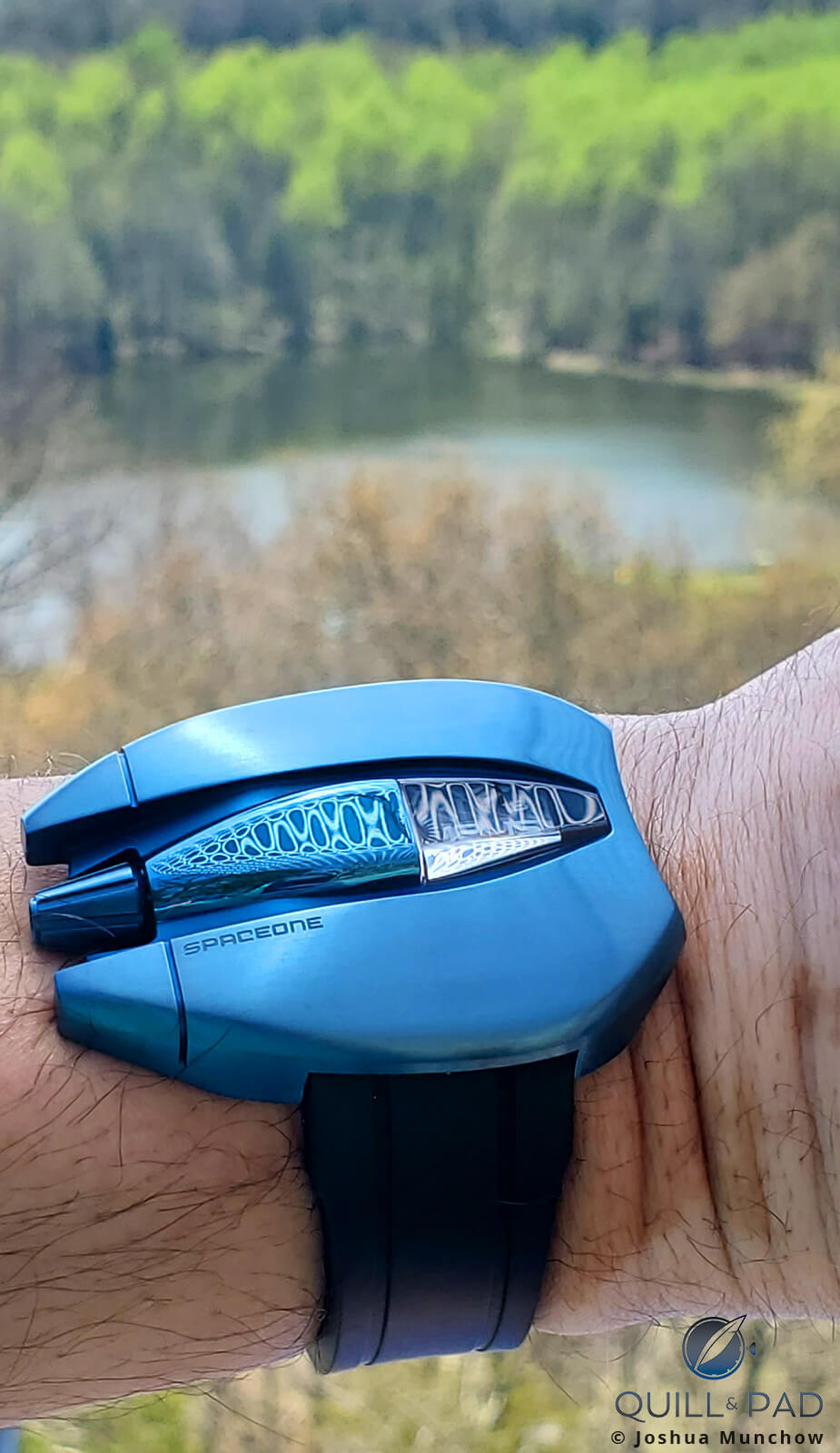
SpaceOne Jumping Hour in blued titanium on the wrist
As a person that doesn’t mind big watches, I’m surprised to see that this watch doesn’t feel like a big watch, and repeated wear reinforces this fact. It receives tons of attention from watch and non-watch people alike, and I’m overjoyed that it also didn’t make me worry about the cost.
—————————————————————————————————–
—————————————————————————————————–
It takes a village
A success like the Spaceone all comes down to the people involved, and there were definitely a lot of people. First, the Soprod P024 movement comes from an established movement maker with its own massive supply chain, the case, buckle, and strap are undoubtedly sourced from multiple suppliers, and the custom sapphire window and sapphire minute discs are not the cheapest component to create.
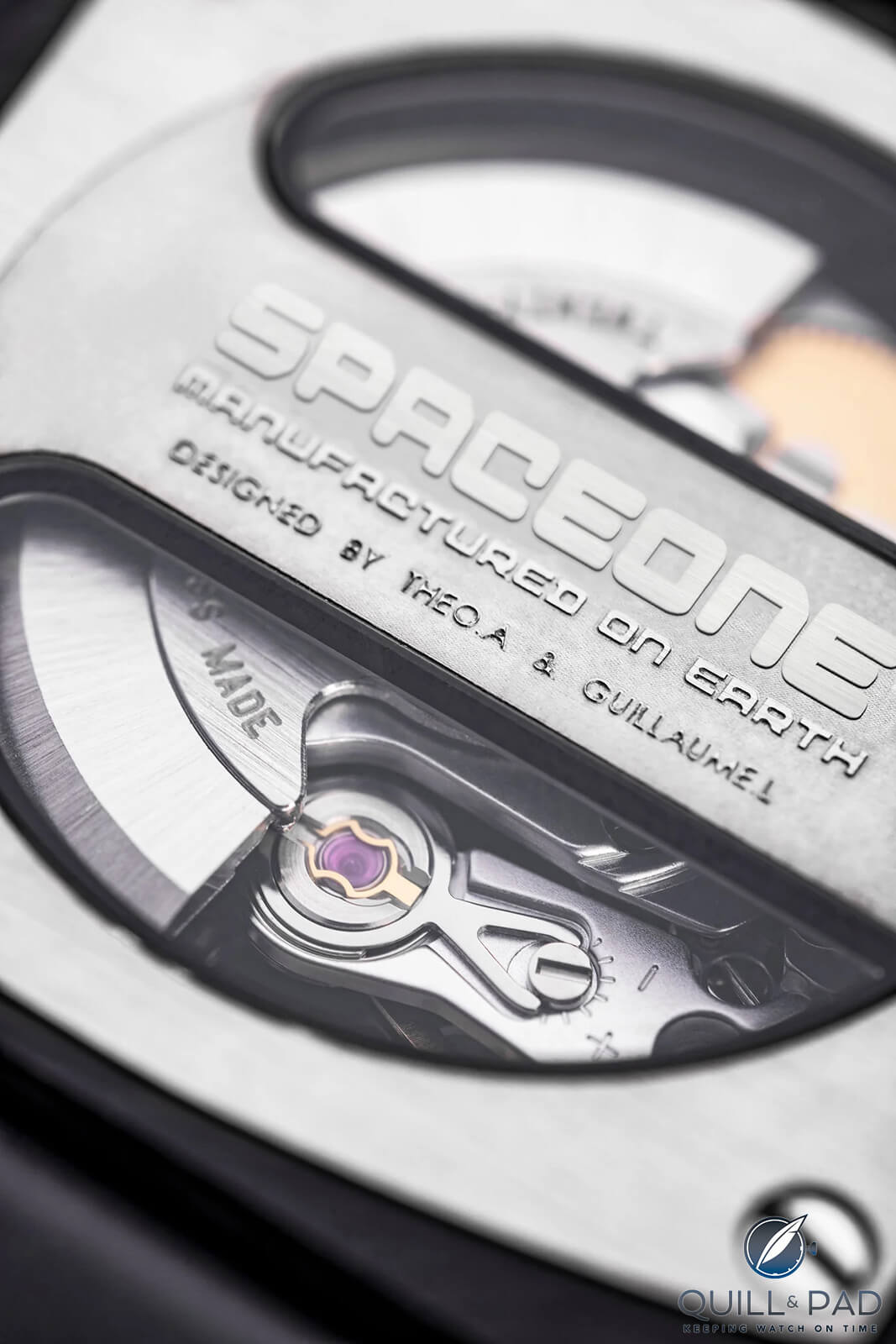
SpaceOne Jumping Hour caseback
This all demonstrates the multitudes of companies and craftspeople behind these watches, especially considering the jump hour mechanism needed to be hand fit and assembled by Spaceone (Theo Auffret) watchmakers.
The only way a watch like this could be offered at this price point was not because of one creative mind or one expert watchmaker, but because of an entire global village of suppliers that were able to master their own skills and provide exceptional components at great prices.
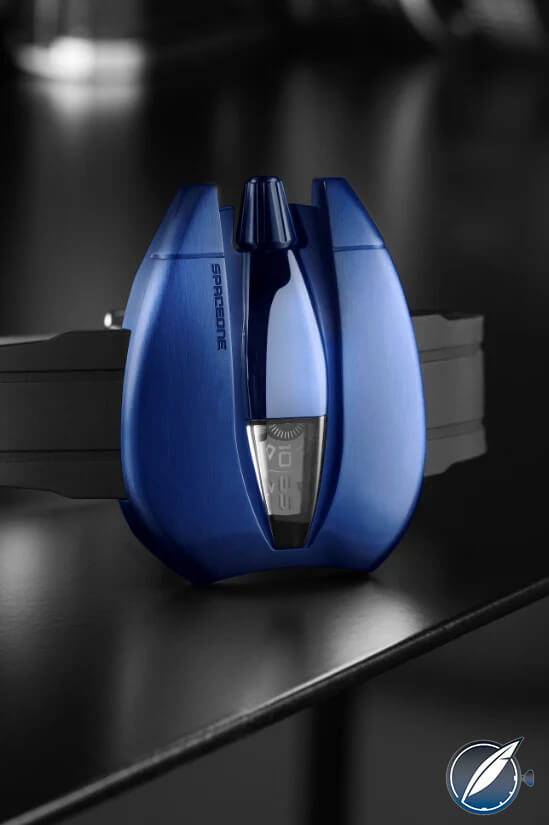
SpaceOne Jumping Hour in blued titanium
If you are able to purchase a fully finished titanium or forged carbon watch with custom bits all over the place for less than two thousand Euros, it is clear that cooperation made this a reality. That village is also now ready and able to support new concepts, such as the Tellurium, an absolutely stunning complication showing the relative orbits of the earth, moon, and sun system, all for under three thousand Euros.
It is projects like these that make it clear we are in a golden age of watchmaking where endless creativity can now be matched by modern manufacturing techniques to make incredible watches a reality for people like myself.
I may never in my wildest dreams be able to afford an Urwerk, MB&F, Christiaan van der Klaauw, or Hautlence (unless they want to work out some kind of work for trade deal, call me!), so I am floored that brands like Spaceone exist that have normal watch collectors in mind when creating new things.
Theo Auffret is still making his incredible haute-horlogerie pieces that super collectors can acquire, but he is also working hard to make things for the rest of us, and that is, and will always be, in the spirit of community and working together so we can all achieve our dreams.
So now I’m wondering, what’s next?
For more information, please https://spaceonewatches.com/pages/the-brand and on Instagram at www.instagram.com/spaceonewatches/
Quick Facts Spaceone Watches Jumping Hour
Case: 42 x 51.67 x 12.61 mm, brushed or polished stainless steel, brushed, black, or heat blued titanium, forged carbon
Movement: automatic Soprod P024 caliber, 38-hour power reserve, 28,800 vph/4Hz with custom jump hour module by Theo Auffret
Functions: Jumping hours, minutes, running seconds
Limitation: Limited to 100 pieces in each blued titanium, brushed titanium, & forged carbon, 50 pieces in forged carbon “Destro”, 30 pieces in brushed titanium “Destro”, 20 pieces in black titanium, 15 pieces in blued titanium “Destro”, 10 pieces for “Back to Earth – Destro”, brushed and polished stainless steel limited to initial Kickstarter campaign
Price: €1,500 (stainless steel), €1,900 (titanium & forged carbon), €2,300 (Back To Earth)
You might also enjoy:
Why I Bought It: Louis Erard X Alain Silberstein Chrono Monopoussoir
Äonic Automat: A New German Brand Makes an Impressive Debut
Tissot PRX Powermatic 80 Review: THE Near-Perfect Swiss Watch and it’s Relatively Affordable
Ball Watch Engineer II Moon Phase Chronometer: Lume on the Moon and Strong Enough to Survive a Train Wreck!

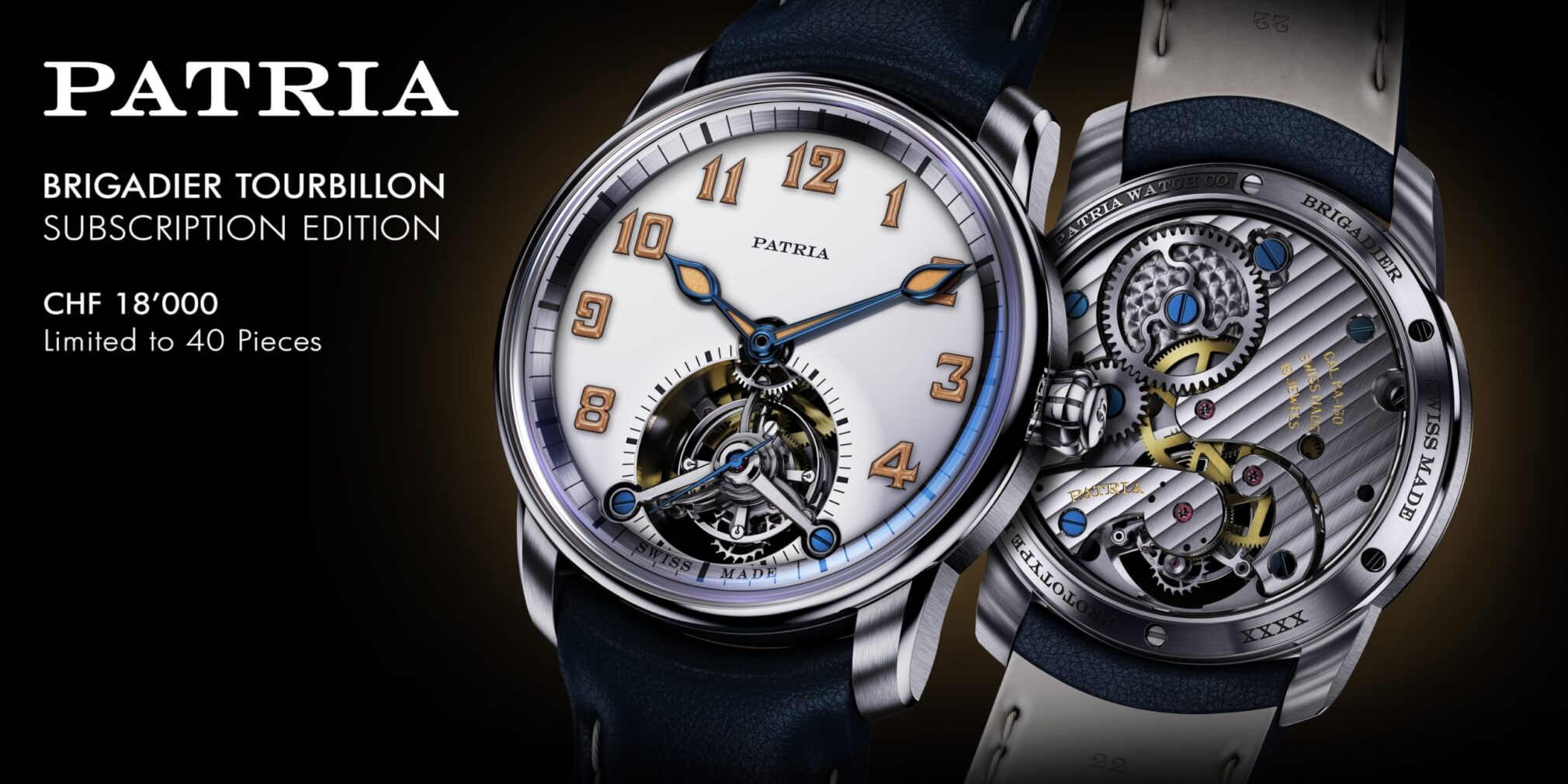
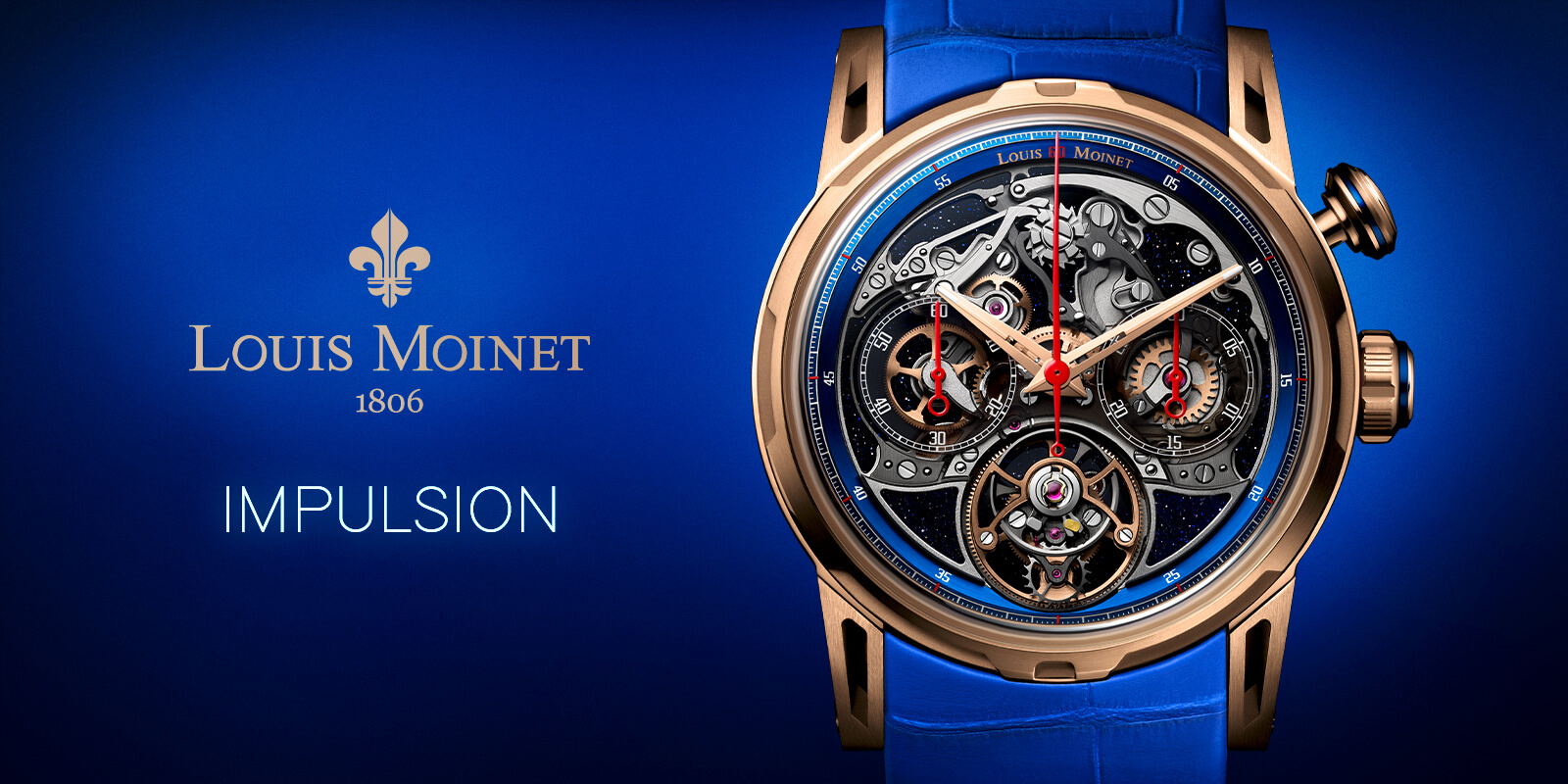


Leave a Reply
Want to join the discussion?Feel free to contribute!